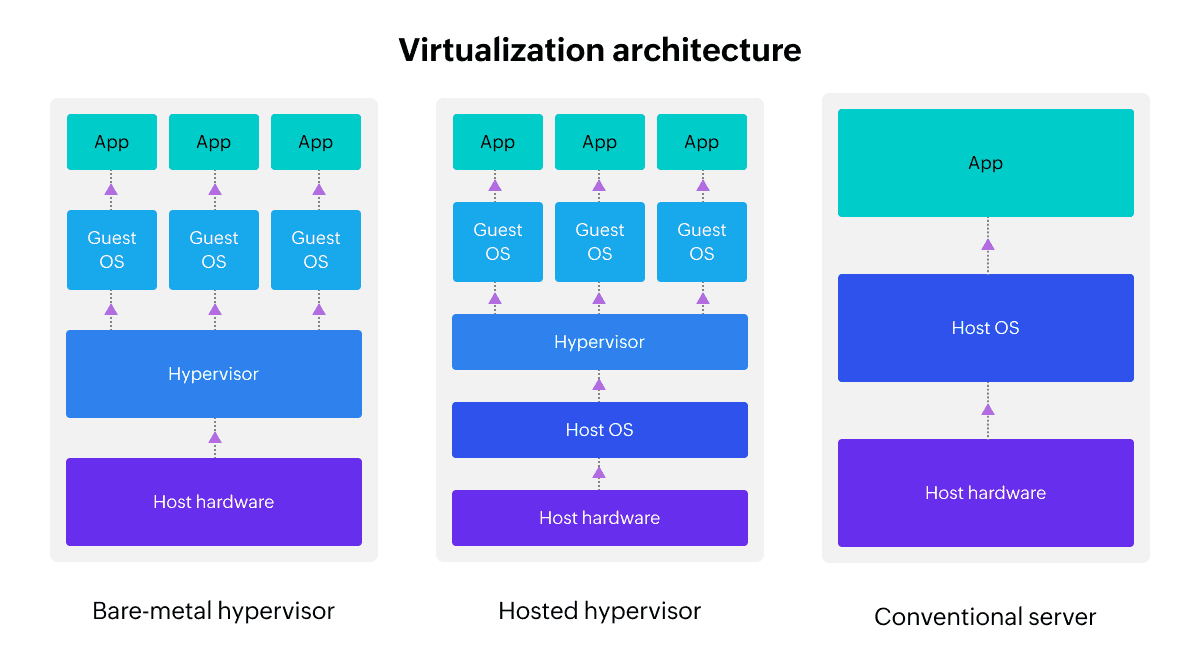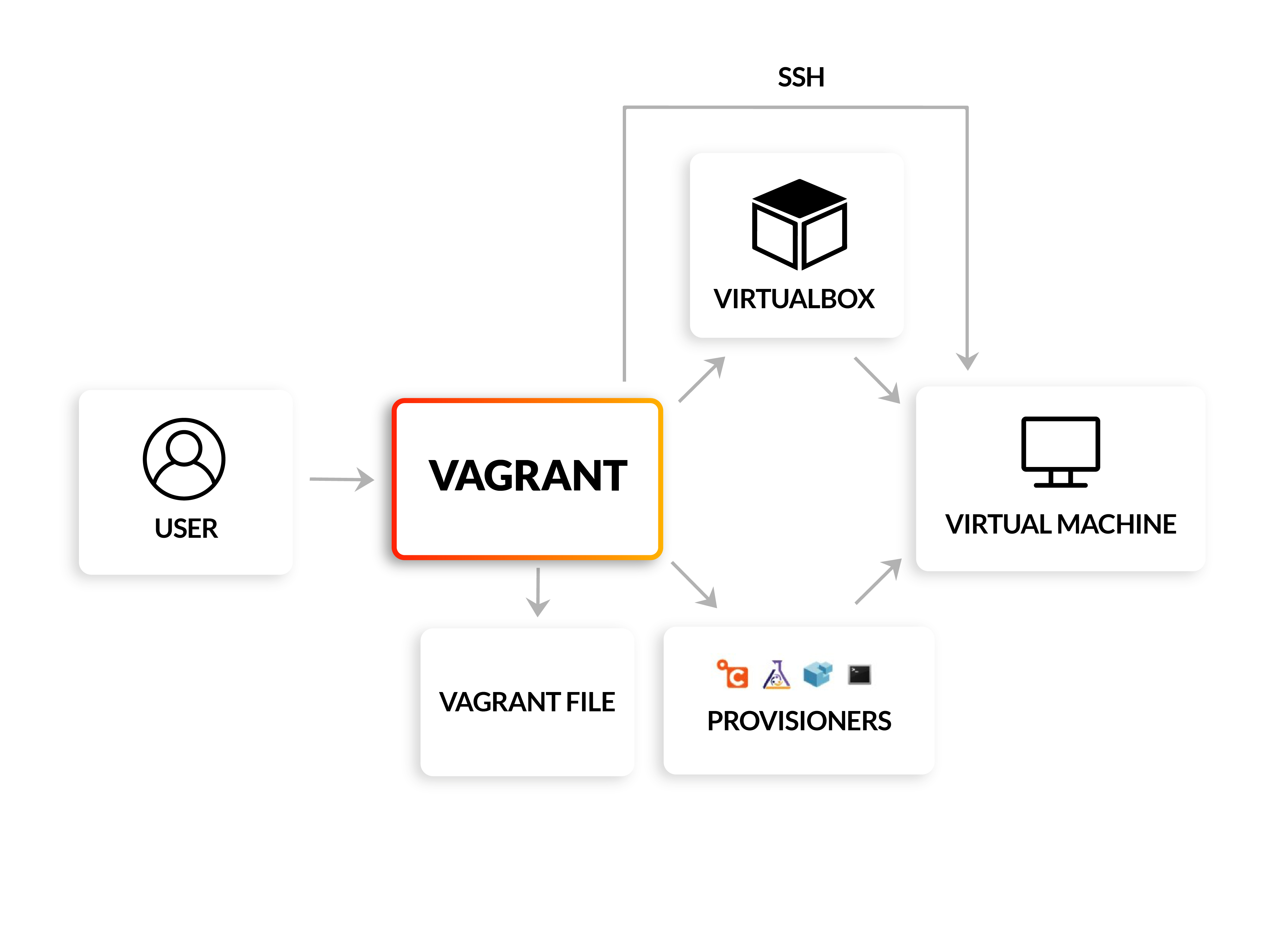Virtualization: Exploring Hypervisors and the Role of Vagrant
 Prashant Jakhar
Prashant Jakhar
Virtualization is a transformative technology that has reshaped the way we approach computing, enabling multiple operating systems to run on a single physical machine. This capability is foundational to cloud computing, data centers, and modern IT infrastructures. In this blog, we’ll explore virtualization, discuss the different types of hypervisors with real-world examples, and explain how Vagrant plays a crucial role in managing virtualized environments.
What is Virtualization?
Virtualization is the process of creating a virtual version of something, such as a server, operating system, storage device, or network resource. By abstracting physical hardware, virtualization allows multiple operating systems (known as virtual machines or VMs) to run on a single physical machine. This leads to better resource utilization, cost savings, and greater flexibility in managing IT resources.
Imagine having a powerful physical server. Without virtualization, you’d typically install one operating system (like Windows Server or Linux) on it, and that OS would control the entire server. If you wanted to run another OS, you’d need another physical server. Virtualization changes this by allowing multiple virtual servers (or virtual machines) to coexist on a single physical server, each running its own OS and applications independently.
Understanding Hypervisors
At the heart of virtualization technology lies the hypervisor, a software layer that enables the creation and management of virtual machines. The hypervisor abstracts the physical hardware, allocating resources like CPU, memory, and storage to each VM, ensuring they operate smoothly without interfering with each other.
Hypervisors come in two main types:

Type 1 Hypervisor (Bare-Metal Hypervisor)
A Type 1 hypervisor runs directly on the host’s physical hardware, without needing a traditional operating system underneath it. This direct interaction with the hardware allows for high performance, efficiency, and scalability, making Type 1 hypervisors ideal for enterprise environments and data centers.
Real-World Examples:
• VMware ESXi: One of the most widely used Type 1 hypervisors, VMware ESXi is the backbone of many enterprise virtualization strategies. Companies like IBM and Dell use ESXi in their data centers to host and manage thousands of virtual machines, supporting critical business applications.
• Microsoft Hyper-V: Integrated with Windows Server, Hyper-V is a popular choice for organizations that rely on Microsoft ecosystems. Hyper-V is commonly used in large corporations, government institutions, and educational settings to consolidate server workloads, reducing the number of physical servers required.
• Xen: An open-source hypervisor, Xen is highly flexible and powers some of the world’s largest cloud platforms, including Amazon Web Services (AWS). It’s known for its ability to handle large-scale, high-performance environments, making it a go-to solution for cloud providers and enterprises alike.
Type 2 Hypervisor (Hosted Hypervisor)
A Type 2 hypervisor, on the other hand, runs on top of an existing operating system. It functions as an application on the host OS, using the OS to manage hardware resources. While Type 2 hypervisors are generally easier to install and use, they tend to offer lower performance compared to Type 1 hypervisors because they introduce an additional layer between the hardware and the virtual machines.
Real-World Examples:
• Oracle VirtualBox: VirtualBox is an open-source Type 2 hypervisor that’s popular among developers, testers, and IT enthusiasts. It supports a wide range of operating systems and is used for creating development and testing environments. For example, a developer might use VirtualBox to run a Linux development environment on a Windows laptop.
• VMware Workstation: VMware Workstation is a commercial Type 2 hypervisor used by professionals who need to run multiple operating systems on a single desktop or laptop. It’s particularly useful for testing software across different environments or running legacy applications that require older operating systems.
• Parallels Desktop: This hypervisor is designed specifically for macOS, allowing users to run Windows or Linux alongside macOS seamlessly. It’s widely used by developers and IT professionals who need to develop or test software across multiple operating systems, without needing separate physical machines.
The Role of Vagrant in Virtualization
While hypervisors manage the virtual machines themselves, Vagrant plays a critical role in managing the environments within these VMs. Vagrant is an open-source tool that simplifies the creation and management of virtualized development environments, ensuring consistency and reproducibility.
How Vagrant Works

Vagrant works by automating the setup of virtual machines using a configuration file called a Vagrantfile. This file defines the operating system, software packages, network configurations, and other settings needed for the environment. Once the Vagrantfile is defined, you can use simple commands to create, destroy, and manage VMs, making the process highly repeatable and efficient.
Vagrant Boxes
In Vagrant, the virtual machine images used to create environments are called “boxes.” A Vagrant box is a packaged virtual environment that includes a base operating system and potentially other pre-installed software. Boxes are the starting point for any Vagrant environment and are easily shareable and reusable across different projects.
Real-World Example:
Imagine a software development team working on a complex web application. Each developer needs to have an identical environment to avoid the common “it works on my machine” problem. With Vagrant, the team can define a Vagrantfile that specifies the exact environment needed—say, an Ubuntu server with Nginx, Node.js, and MongoDB installed. This environment is based on a Vagrant box that contains the Ubuntu operating system. Each developer can then use Vagrant to spin up an identical VM on their local machine, ensuring that everyone is working in the same environment, regardless of their host OS.
Vagrant in Testing and CI/CD Pipelines
Vagrant is also widely used in testing and continuous integration/continuous deployment (CI/CD) pipelines. For instance, a QA team might use Vagrant to quickly spin up and tear down clean test environments, ensuring that applications are tested in a consistent, isolated setting. This is particularly useful for testing across multiple operating systems or configurations.
In CI/CD pipelines, Vagrant can be used to automate the provisioning of test environments, ensuring that every code commit is tested in an identical setup. This consistency is crucial for catching bugs early in the development cycle, reducing the likelihood of issues in production.
Here are some common Vagrant commands you might use:
1. vagrant init: Initializes a new Vagrant environment by creating a Vagrantfile in the current directory.
vagrant init
2. vagrant up: Starts and provisions the virtual machine as described in the Vagrantfile.
vagrant up
3. vagrant ssh: SSH into the running virtual machine.
vagrant ssh
4. vagrant halt: Stops the running virtual machine.
vagrant halt
5. vagrant suspend: Suspends the virtual machine (saves the current state to disk).
vagrant suspend
6. vagrant resume: Resumes a suspended virtual machine.
vagrant resume
7. vagrant reload: Restarts the virtual machine and applies any changes made to the Vagrantfile.
vagrant reload
8. vagrant destroy: Stops the virtual machine and deletes all associated resources.
vagrant destroy
9. vagrant status: Displays the status of the virtual machine.
vagrant status
10. vagrant provision: Runs the provisioners defined in the Vagrantfile on the running virtual machine.
vagrant provision
11. vagrant box add: Adds a Vagrant box to your local box list.
vagrant box add <box_name>
12. vagrant box list: Lists all Vagrant boxes that are currently installed.
vagrant box list
13. vagrant box remove: Removes a specific Vagrant box from your local box list.
vagrant box remove <box_name>
14. vagrant plugin install: Installs a Vagrant plugin.
vagrant plugin install <plugin_name>
15. vagrant plugin list: Lists installed Vagrant plugins.
vagrant plugin list
These commands are essential for managing virtual machines in Vagrant and streamlining the development environment setup.
Conclusion
Virtualization has become an essential technology for modern IT infrastructure, offering unparalleled flexibility, efficiency, and cost savings. Hypervisors, whether Type 1 or Type 2, enable the creation and management of virtual machines, supporting a wide range of use cases from enterprise data centers to individual developers’ workstations. Vagrant complements this ecosystem by simplifying the creation and management of consistent, reproducible virtual environments, making it an invaluable tool for developers, testers, and IT professionals alike.
By understanding the types of hypervisors, the concept of Vagrant boxes, and how tools like Vagrant fit into the broader virtualization landscape, you can better leverage these technologies to optimize your workflows, improve resource utilization, and drive innovation in your projects.
Subscribe to my newsletter
Read articles from Prashant Jakhar directly inside your inbox. Subscribe to the newsletter, and don't miss out.
Written by
